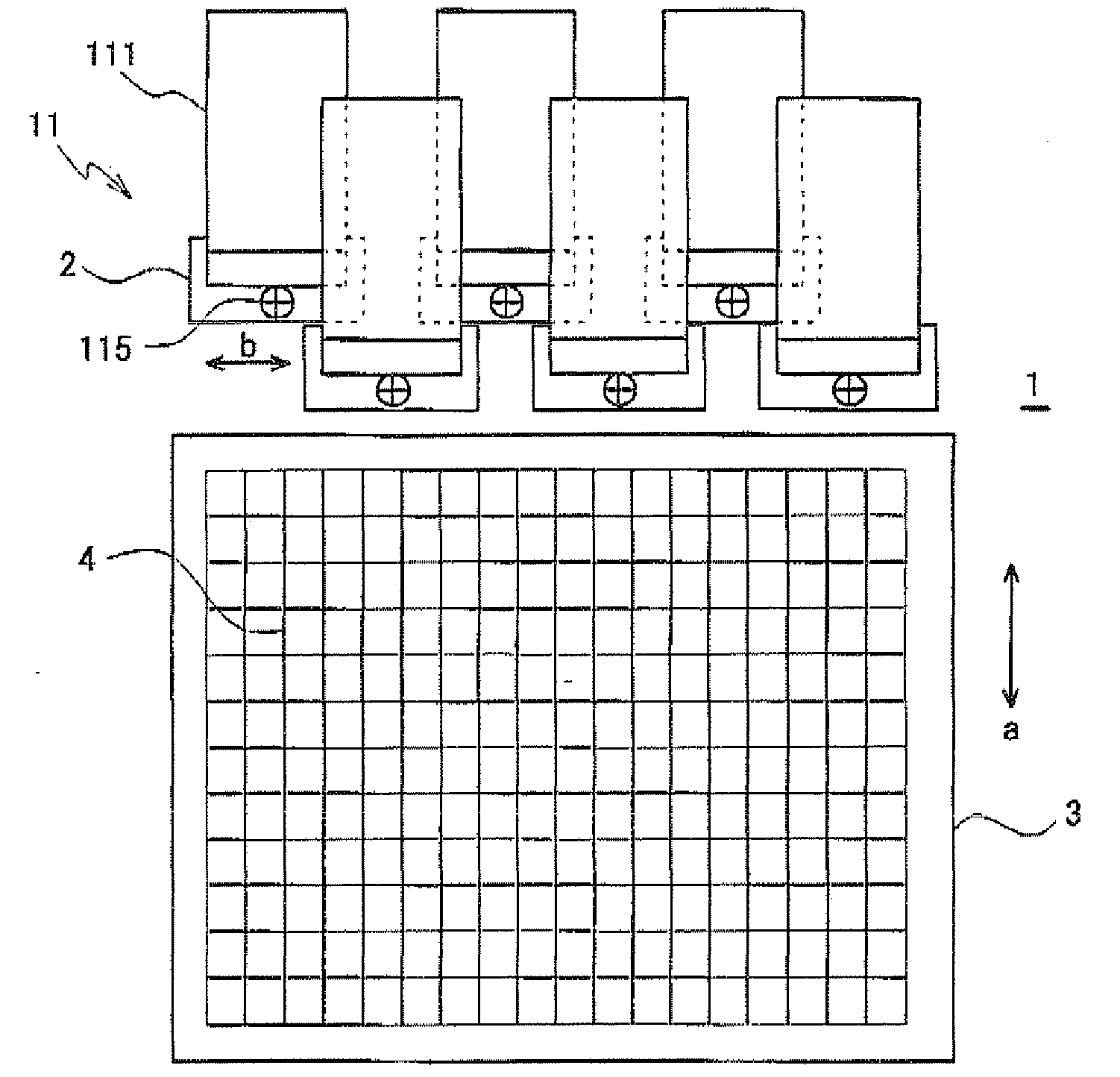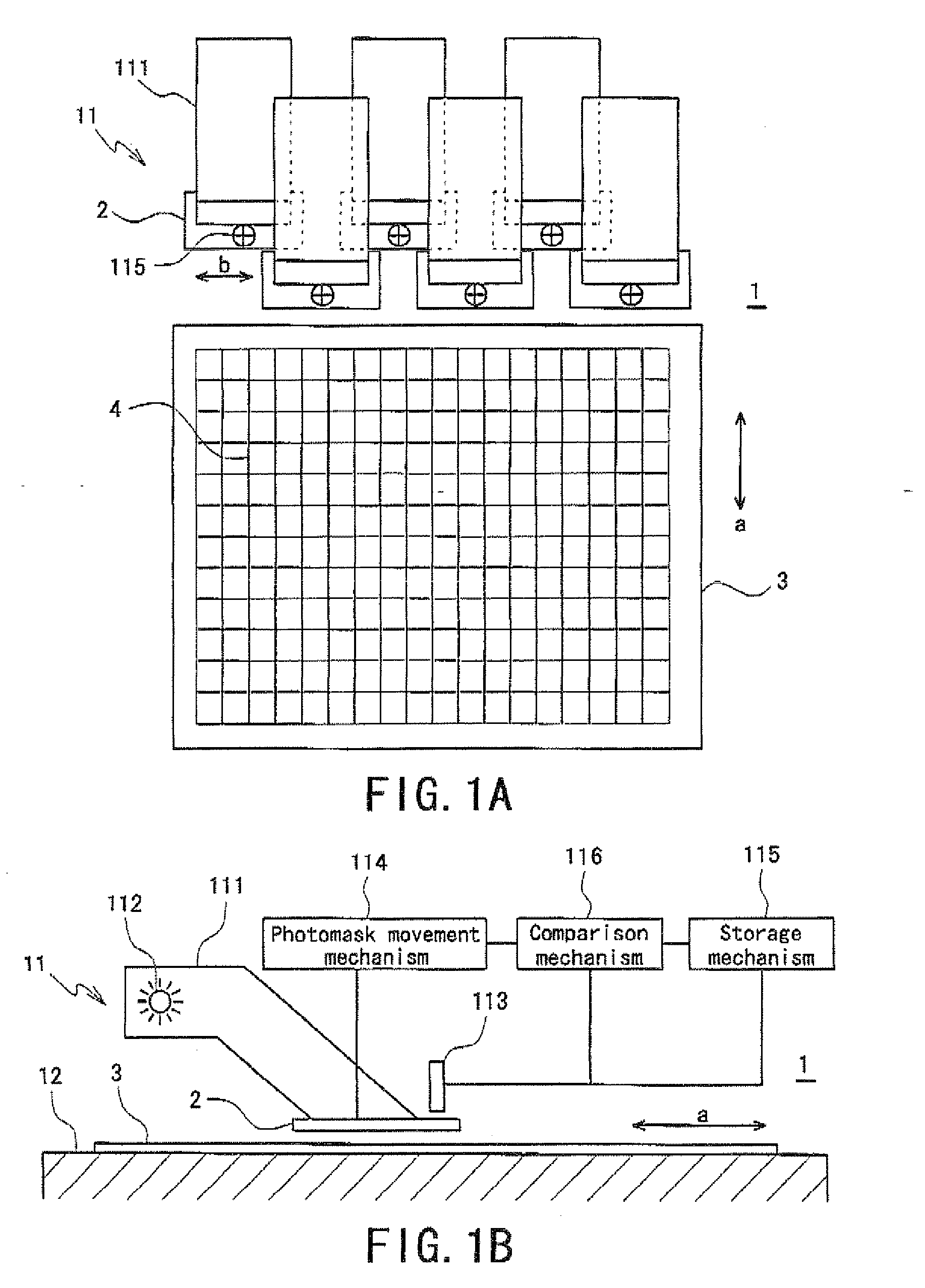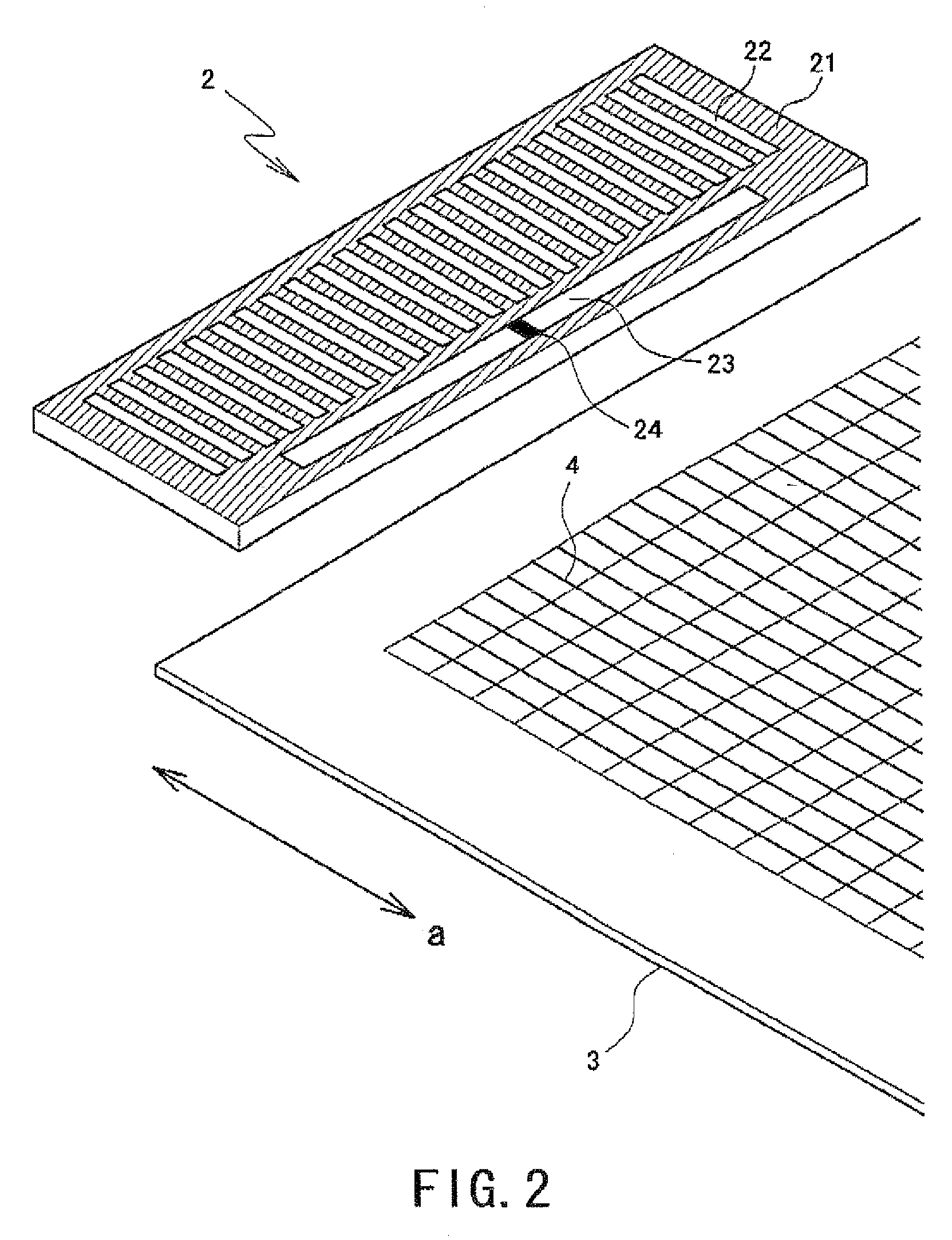[0011]An object of the invention is to overcome the problems described above and to provide a method for performing exposure by projecting
ultraviolet light or other light onto some regions on a surface of a substrate using a plurality of small photomasks having slit openings while moving the substrate. This method enables predetermined regions on the
substrate surface to be exposed in stripes (i.e. irradiated with
ultraviolet light or other light). In addition, while projecting
ultraviolet light or other light and moving the substrate, this method simultaneously photographs existing patterns prearranged on the
substrate surface, for example, line patterns including gate
bus lines, source bus lines, and a
black matrix, and a reference mark arranged on the photomask, in order to monitor the position onto which the light is actually projected, that is, the position of the photomask with respect to the existing patterns using a photographed image. By such exposure method, it is possible to perform exposure with high alignment accuracy regardless of the sizes of substrates.
[0012]Preferred embodiments of the present invention provides an exposure method which performs exposure while relatively moving a photomask above a substrate and includes a step of performing position correction of a photomask by performing, on a front side of the photomask relatively moved in a moving direction, image recognition of a pattern prearranged on the substrate and by correcting deviation of the photomask with respect to the pattern, and a step of checking the position correction of the photomask by performing image recognition of a reference mark arranged on the photomask and by determining whether or not the position correction of the photomask is accurately performed in the step of performing the position correction of the photomask.
[0015]Preferred embodiments of the present invention also provide an exposure device which performs exposure while relatively moving a photomask above a substrate and includes a mechanism to perform position correction of the photomask by performing, on a front side of the photomask relatively moved in a moving direction, image recognition of a pattern prearranged on the substrate and by correcting deviation of the photomask with respect to the pattern, and a mechanism to check the position correction of the photomask by performing image recognition of a reference mark arranged on the photomask and by determining whether or not the position correction of the photomask is accurately performed by the mechanism to perform the position correction of the photomask.
[0019]If the photomask is configured such that the light transmitting window for performing the image recognition of the pattern prearranged on the substrate is arranged on the photomask and the reference mark of the photomask is arranged on the light transmitting window, the light transmitting window and the reference mark can be provided in a normal manufacturing process of the photomask. Accordingly, the cost to manufacture the photomask does not increase.
[0020]In addition, if the image recognition of the pattern prearranged on the substrate and the image recognition of the reference mark of the photomask are performed using one camera, it becomes possible to simplify equipment for the image recognition, and the positioning accuracy of the camera is improved as compared to the case of providing two cameras for both of the image recognitions.
[0021]Further, if the camera is a bifocal camera, it is possible to simultaneously perform focus adjustment in the image recognition of the pattern prearranged on the substrate and focus adjustment in the image recognition of the reference mark of the photomask. Thus, recognized images are not blurred, thereby allowing easier
image processing such as detection of edges.
 Login to View More
Login to View More  Login to View More
Login to View More 


